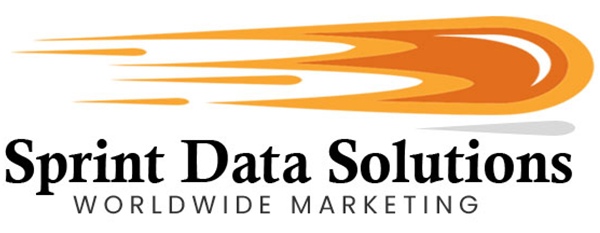Insurance Becomes More Important In Times Of Volatility
Insurance is often summed up by the saying, “It’s better to have it and not need it than need it and not have it.” This sentiment encapsulates the crucial role insurance plays in protecting individuals and businesses from the financial fallout of unforeseen events. Accidents, whether they involve health issues, vehicle collisions, property damage, or business interruptions, can lead to hefty recovery costs that many people or organizations simply cannot afford without financial assistance. Insurance fills this gap by offering a safety net. In exchange for regular premium payments, the policyholder gains access to financial support when disaster strikes, often covering significant portions of the associated costs.
In some instances, insurance is more than just a safety precaution—it’s a legal requirement. For example, car insurance is mandated by law in nearly every state in the U.S., with vehicle owners required to carry a minimum amount of coverage before they can legally operate their vehicles on public roads. While paying for insurance can seem like a mundane or unnecessary expense during periods of calm, it becomes invaluable when an emergency occurs. In fact, insurance has the potential to save lives, homes, businesses, and even futures, as it provides a financial cushion when everything else may be at risk.
Despite its importance, insurance is often treated like vegetables in the lives of many consumers—acknowledged as essential but not always fully appreciated or understood. Many people may not dive deeply into the details of their policies, either because they trust their provider or because they’re simply too busy with daily life to worry about it. However, this lack of engagement can be detrimental. With so many different types of insurance available—each offering varying levels of coverage, pricing, and exclusions—it’s easy for consumers to miss out on better deals or more comprehensive coverage that could better suit their needs. This is where effective marketing becomes essential. By clearly explaining the benefits, potential drawbacks, and unique features of different insurance policies, companies can raise awareness and guide customers toward more informed decisions. This kind of outreach can encourage consumers to review their policies, understand what they’re paying for, and potentially switch to a policy that offers better value, coverage, or service.

Who Benefits?
There is a wide array of insurance options available to both individual consumers and businesses across the United States, catering to various needs and industries. From personal health, auto, and home insurance to specialized coverage such as life, disability, and travel insurance, individuals can protect themselves from unforeseen events. Businesses also have access to numerous insurance types, including general liability, workers’ compensation, property, and professional indemnity insurance, which safeguard against financial losses due to risks like accidents, lawsuits, or property damage. Additionally, industry-specific policies, such as those for healthcare providers or construction companies, offer more tailored protection. The vast insurance market helps ensure that both personal and commercial interests are adequately covered, allowing for a sense of security and risk management in a complex world. Just a few places where insurance can better target the market include:
Health Insurance
Health insurance is a critical concern for many Americans, especially considering the country’s rapid advancements in medical science and healthcare technology. While these breakthroughs are often life-saving, they also come with exorbitant costs that are beyond the reach of many individuals and families. For those without employer-sponsored health insurance or government assistance, even routine medical care can be financially devastating. The burden of high medical expenses can result in overwhelming debt, potentially leading to long-term financial hardship for families, with some facing the possibility of losing everything to cover a major health crisis.
Though the Affordable Care Act (ACA) made significant strides in making healthcare more accessible to Americans, its provisions are still seen as lacking in certain areas. Premiums, out-of-pocket costs, and coverage gaps remain significant obstacles for many, leaving people searching for better alternatives. The current system does not fully address the challenges faced by millions of people who are uninsured or underinsured. As healthcare costs continue to rise, there is a growing need for innovative insurance solutions that can provide more comprehensive and affordable coverage options. Individuals are increasingly turning to alternatives that offer better flexibility, lower costs, and more personalized care, making the search for reliable and affordable health insurance solutions more crucial than ever. In a society where healthcare is increasingly complex and expensive, offering people viable alternatives to the current system presents an opportunity to ease their financial burden while ensuring access to necessary medical services.
Medicare Part B
Medicare Part B is an essential component of healthcare financing that often becomes a significant concern for many Americans as they age. While the focus of healthcare costs frequently revolves around high-cost medical procedures like surgeries, cancer treatments, or hospitalization, the reality is that there are numerous other ongoing expenses that can add up over time. Medicare Part B helps cover a wide range of outpatient services, including regular doctor visits, preventive care, medical supplies, and even transportation to healthcare facilities via ambulance. In addition to physical health concerns, Medicare Part B also provides coverage for essential mental health services, including therapy and counseling, which are increasingly recognized as a critical component of overall well-being. Furthermore, it can cover important medical equipment such as wheelchairs, blood glucose monitors for diabetes management, and other devices that enhance quality of life for individuals with chronic conditions. Because of the broad scope of coverage, Medicare Part B is often just as important, if not more so, than traditional health insurance. For businesses that provide Medicare Part B insurance options, effectively targeting the right demographic can yield significant interest and engagement, as seniors and individuals with disabilities look for reliable solutions to help manage their ongoing healthcare costs.
Life Insurance
The loss of a loved one is an undeniably challenging experience, and its emotional toll is compounded by the financial burdens it may create for surviving family members. This is particularly true when the deceased was the primary breadwinner, responsible for supporting the family’s essential needs, such as food, housing, and education. In cases where children are left behind, the financial gap can be especially daunting. Life insurance was developed as a means of providing financial relief in such circumstances, which is why it remains one of the oldest and most widely recognized forms of insurance. Despite its long-standing presence, many people still find life insurance to be a complex and confusing product. Policies often include numerous clauses, conditions, and additional “riders” that can significantly alter the benefits or costs associated with coverage. Unfortunately, many policyholders may not fully understand the potential drawbacks or exclusions tied to their plans. This lack of clarity can leave individuals unknowingly at a disadvantage when they need their coverage the most. In a competitive insurance landscape, providers who offer transparent, flexible, and comprehensive policies—along with clearly outlined benefits—have an opportunity to stand out by offering a better overall product. Providing a life insurance policy that minimizes hidden exclusions and limitations not only builds trust with clients but also ensures they are truly protected when it matters most.
Variable Annuity Holders
Variable annuities are investment products offered by insurance companies that combine features of both insurance and investment. These financial vehicles require either a lump sum payment or a series of smaller, regular contributions from the policyholder. In return, the holder receives tax-deferred growth on their investments, and at a specified time, usually during retirement, the accumulated funds are paid out in the form of periodic income. This income can be structured to last for a fixed period or for the life of the annuitant, and may also be passed on to designated beneficiaries, such as a spouse or children, after the policyholder’s death.
What sets variable annuities apart is their potential for growth through investment in a range of assets, such as stocks, bonds, or mutual funds, making them more closely aligned with investment strategies rather than traditional insurance products. The value of the annuity can fluctuate based on the performance of the underlying investments, offering the possibility for higher returns, but also carrying some risk. Due to their tax-deferred growth and flexibility in managing payouts, variable annuities are particularly appealing to those looking to secure their financial future, often targeting individuals planning for retirement or seeking to diversify their investment portfolio.
Demographics that are typically drawn to variable annuities include those in their late 40s to 60s, who are focused on retirement planning and wealth accumulation. These individuals are often looking for ways to manage risk while growing their wealth in a tax-efficient manner. Furthermore, affluent individuals with higher disposable income may seek variable annuities to enhance their financial strategy with more personalized investment options. Additionally, those concerned with leaving a financial legacy to loved ones may also find variable annuities attractive, as they can provide guaranteed income for the policyholder while ensuring funds are available for their heirs.
Auto Insurance
Auto insurance is a necessity for anyone looking to legally drive a vehicle, but the diversity of policies available means that not all coverage options are the same. Many drivers, attracted by discounts from larger insurers that bundle auto insurance with other types of policies like home or life insurance, may end up with plans that aren’t well-suited to their specific needs. In fact, the convenience of these bundled deals often leads to drivers overlooking key coverage gaps or paying for unnecessary extras. As a result, many may not even realize that more affordable or comprehensive alternatives exist. There is a significant opportunity in the auto insurance market for innovative, customer-centric policies that offer competitive pricing, flexibility, and tailored coverage, ensuring that drivers get exactly what they need at the right price, rather than settling for a one-size-fits-all solution.
Home Insurance
While home insurance may not be a legal requirement in the same way that auto insurance is mandated by state laws, it is practically a necessity for many homebuyers. Lenders, particularly banks, often require proof of home insurance before they approve a mortgage. This means that even though no state law explicitly mandates home insurance, securing a mortgage loan becomes nearly impossible without it. For homeowners who have paid off their mortgages, home insurance remains a prudent safeguard against unexpected disasters such as fires, theft, or weather-related damage, helping to protect both the structure of the home and personal belongings.
Like auto insurance, the home insurance market is highly competitive and offers a wide range of products with varying levels of coverage. Many homeowners opt for basic policies, primarily due to convenience or price, often bundled with other types of insurance like auto or life insurance, which can result in significant discounts. However, while these bundled packages may offer initial cost savings, they might not provide the most comprehensive coverage for all potential risks. More detailed policies, which may come at a slightly higher premium, could better serve the homeowner’s needs by offering enhanced protection or specialized coverage options, such as flood insurance or coverage for valuable personal property. Educating homeowners about the additional benefits of switching to a more competitive product can be a powerful motivator. By understanding their options and the long-term benefits of more tailored policies, policyholders can make more informed decisions that better align with their specific needs and risk factors.
Renter Insurance
In recent years, insurance providers have recognized the growing need for coverage among renters, particularly in urban areas like New York City, where a significant number of residents live in rent-controlled apartments for extended periods. These individuals, while not property owners, face risks that could be mitigated through renters’ insurance. Renters’ insurance offers critical protection in the event of unexpected incidents, such as accidents, fire, or theft, ensuring that tenants can recover quickly and avoid financial strain. As economic pressures continue to make homeownership less attainable for many, the rental market has expanded, with more individuals opting to rent for longer periods. This shift presents a significant opportunity for insurance companies to target a largely untapped demographic. With targeted marketing and educational efforts, renters can better understand the importance of protecting their personal belongings, liability, and living space with the right policy. By highlighting the benefits of renters’ insurance—such as affordable coverage options and peace of mind—insurance providers can help renters secure the protection they need, ultimately fostering a more informed and proactive consumer base.
Vault Insurance
Storing valuable items in a vault is often seen as the ultimate safeguard, providing peace of mind and protection from theft, fire, or other threats. However, even with this heightened security, there are still risks that can put these prized possessions at risk. Natural disasters like floods, earthquakes, or fires, as well as unforeseen events such as break-ins or accidental damage, can compromise the safety of items stored in a vault. Despite the significant financial investment made in securing these valuables, the contents can be irreversibly lost if they are not adequately protected with insurance. Vault insurance is a crucial safeguard for individuals who want to ensure that their valuable items are covered in case the worst happens. It provides an extra layer of financial protection and peace of mind, allowing vault owners to rest assured that, in the event of a catastrophe, their investments are not lost without recourse. For those who already rely on vault storage for security, the addition of insurance becomes a logical step, offering enhanced protection at a relatively small additional cost. The right marketing message can emphasize how vault insurance provides essential security, turning it into a valuable investment that complements the protection already in place.
Commercial Business Insurance
Commercial business insurance has a rich history, dating back centuries when merchants first sought ways to protect their valuable cargo during long sea voyages to distant ports. Today, this form of insurance has evolved into a complex, multifaceted industry that caters to a wide range of businesses across various sectors. Whether it’s safeguarding physical assets like buildings, equipment, and inventory, or protecting against liability risks, commercial business insurance is essential for companies of all sizes. Business owners understand the importance of securing their operations against potential risks, including property damage, worker injuries, cyber threats, and legal claims. As the business landscape continues to change, so too does the need for tailored insurance policies that offer competitive coverage, address emerging risks, and align with evolving market conditions. Smart business owners know that comprehensive insurance isn’t just about protection; it’s a strategic investment in the continued success and stability of their operations. With a broad array of options available, the key is to find policies that balance robust coverage with cost-effectiveness, ensuring businesses remain secure in an ever-changing world.
Personal Property Insurance
Many people mistakenly believe that their home insurance policy provides comprehensive protection for everything inside their home, but this is not always the case. In fact, many home insurance policies, especially those with low premiums, focus primarily on protecting the structure of the home itself and fail to adequately cover the valuable personal belongings within it. Items like electronics, furniture, clothing, jewelry, and important documents may not be fully covered under a basic home insurance policy, and this can leave homeowners and renters alike vulnerable to significant financial loss in the event of theft, fire, or other unforeseen disasters.
Personal property insurance is crucial for anyone looking to safeguard not just the physical structure of their home but also the things that make it feel like home—those items that hold personal or monetary value. This type of insurance applies to both homeowners and renters, providing coverage for personal belongings in the event of damage or loss. For renters, this is especially important, as their landlord’s insurance only covers the building itself, not the possessions inside. With the right personal property insurance, individuals can protect items that may hold far more sentimental value than the home itself. Marketing personal property insurance to those who value their belongings or have irreplaceable family heirlooms can help ensure they have peace of mind, knowing that they are financially covered in the face of the unexpected.

Insurance Bond
An insurance bond, while not exactly the same as an insurance policy, shares a similar purpose in providing financial assurance and protecting against potential risks. Essentially, a bond acts as a guarantee that a specific obligation will be fulfilled, offering peace of mind to the party requesting the bond. These bonds can vary greatly depending on the type of assurance needed. For instance, fidelity bonds are often required by businesses to protect against employee dishonesty or fraud, ensuring that the company has coverage if such an event occurs. Bid and performance bonds, on the other hand, are critical in industries like construction, where they serve as a promise that a contractor will complete the project according to the terms agreed upon. The nature of bonds means they can be applied to a wide variety of sectors, and businesses—whether small or large—frequently find themselves in need of these bonds to secure contracts, reassure clients, or meet legal obligations. This makes marketing bonds to businesses, particularly those operating in industries with high contractual requirements, a promising opportunity for insurers and bond providers looking to reach a broad range of potential clients. Whether it’s ensuring compliance with legal standards or offering financial protection, bonds provide crucial backing for businesses to operate smoothly and with confidence.
Business Interruption Insurance
When a home is impacted by a disaster, the primary concern is often securing temporary housing until repairs can be made, which may disrupt daily life but does not typically threaten a person’s livelihood. However, when a disaster strikes a business, the consequences can be far more severe, as it can result in a loss of income, layoff of employees, and potentially the permanent closure of the company. This is where business interruption insurance becomes crucial. It provides financial protection for businesses by covering loss of income during the period when operations are halted due to a covered disaster, ensuring that the business can continue paying bills, employee salaries, and even covering operating costs such as rent or loan payments.
Business interruption insurance is versatile and can be tailored to fit a wide range of business needs, depending on the specific risks and operations of the company. It can cover costs such as the relocation of equipment and inventory, temporary office space, and even expenses incurred while attempting to resume business activities in a temporary location. Some policies also offer additional coverage options, such as helping to compensate for lost profits or even loss of key personnel. The key to making business interruption insurance effective is ensuring it is aligned with the specific vulnerabilities and requirements of the business it is protecting. This helps ensure the business is not only able to recover but also to resume its operations with minimal disruption, preserving its long-term sustainability.
Fire Insurance
Fire insurance is one of the most essential and widely recognized forms of coverage, providing crucial financial protection against the devastation of fire-related damage. The threat of fire is a constant concern for homeowners and businesses alike, as the consequences of even a small fire can be catastrophic. The peace of mind that comes with knowing you’re financially safeguarded in the event of such a disaster is invaluable. However, not all fire insurance policies are created equal, and coverage levels can vary significantly between providers. Some insurers may offer basic coverage that doesn’t fully address the wide range of potential fire-related damages, leaving customers with insufficient protection when they need it most. This discrepancy in coverage means there is an ongoing opportunity for consumers to seek out better options or negotiate more favorable terms with companies that offer more comprehensive coverage or competitive rates. As insurers compete to offer better terms and attract customers, policyholders have the leverage to secure more robust protection and better value, ensuring that their properties are adequately covered in the face of this ever-present risk.
High-Risk Insurance
While insurance coverage is essential for most people, not everyone qualifies for standard policies due to factors such as a history of multiple accidents, poor credit, or higher risk activities. This is where non-standard or “high-risk” insurance policies come into play. These specialized policies cater to individuals and businesses who may not meet the usual underwriting criteria for conventional coverage. Examples include drivers with a history of multiple accidents or traffic violations, individuals who’ve had trouble maintaining premium payments, or property owners who own buildings they don’t plan to occupy, such as vacation homes or rental properties. This sector also includes high-risk individuals, like those who participate in extreme sports, or businesses in higher-risk industries, such as construction or hospitality. The non-standard insurance market serves an important niche, offering protection and peace of mind to those who would otherwise be unable to secure coverage. While this market is smaller compared to standard insurance, it remains an active and growing segment driven by a need for tailored, accessible policies. Insurance providers that specialize in high-risk coverage often create customized solutions, addressing the unique needs and risk profiles of each customer. Understanding the nuances of this market and targeting the right demographic is key for insurers looking to tap into this profitable space. With the right strategies and data, insurers can effectively connect with individuals and businesses who require alternative options to ensure financial protection in case of accidents, damages, or other unforeseen events.

How We Can Help
Sprint Data Solutions Worldwide Marketing is a proud 100% American-owned and veteran-operated company, founded by a disabled veteran with a mission to drive economic growth through superior marketing solutions. Initially specializing in direct mail marketing, we have evolved into a comprehensive service provider offering domestic, continental, and international marketing services. Our expertise lies in delivering highly targeted insurance leads, utilizing advanced AI-powered analytics, machine learning, and access to a wide range of reputable, constantly updated databases to ensure the highest quality, accuracy, and relevance in our contact lists. We cater to diverse marketing needs across multiple channels, including direct mail, telemarketing, email, and SMS/text marketing. With a focus on competitive pricing, precise geographic and demographic targeting, and a commitment to excellence, we provide businesses with the most effective solutions to reach their ideal insurance customers. Whether you’re looking to expand your reach or enhance your customer engagement, Sprint Data Solutions is your trusted partner for all your marketing list needs.






